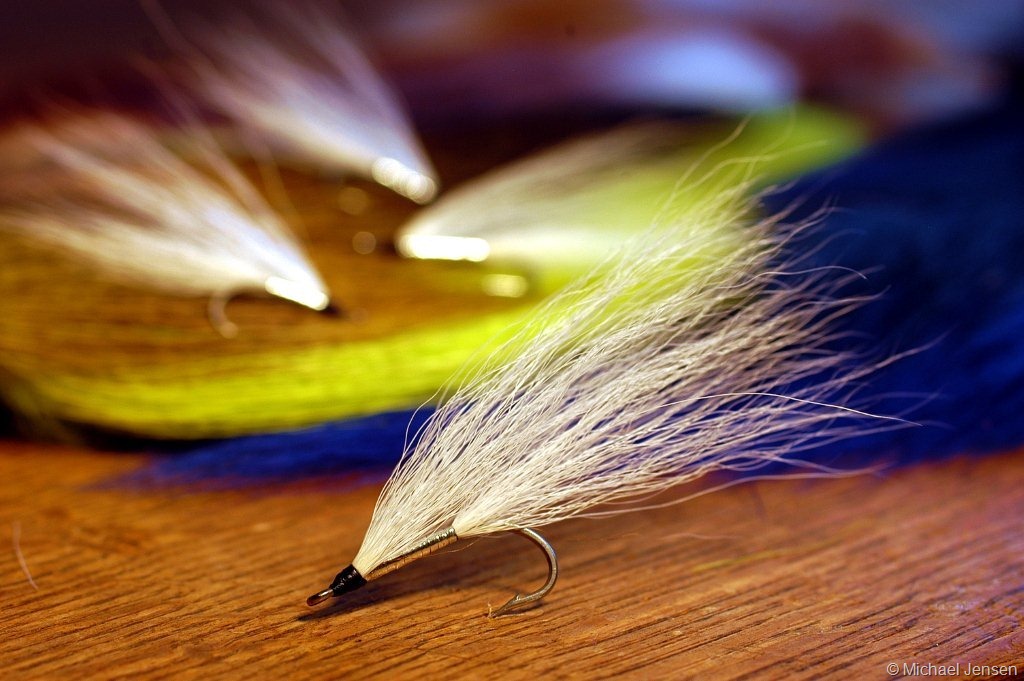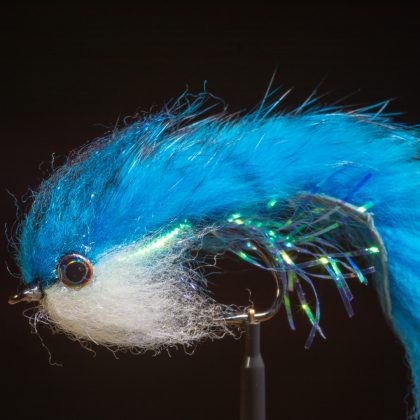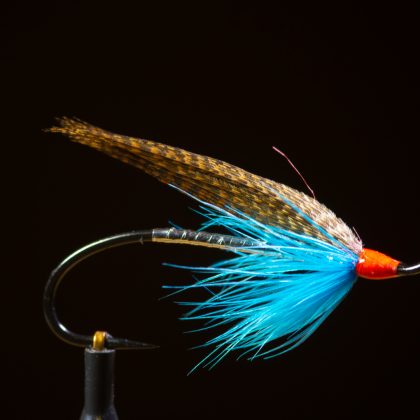Tying and fishing Jack Gartside’s super simple Soft Hackle Streamer got me thinking: Is there a reason why fly tiers invent more and more complicated patterns. I can spend an afternoon tying a streamer fly with flashy fibers, kicking rubber legs, smiling mouth, staring eyes and all the other stuff we sometime believe is necessary to fool a fish.
But… hands down: I know the fish has got a brain the size of a pea – and somehow I can’t help wondering who is acting most stupid.
Well, I also know that, when I hit the water, I´ll probably reach for one of Jacks simple streamers instead of the fancy one. Simply because they are easy to tie (which means less time at the vice and more time on the water), they look fantastic and… I know they catch fish.
That recognition made me backtrack for a while – searching for more simple patterns. It wasn´t a rage against the machines thing, more like well… I was just looking for simplicity.
I decided to tie some Bucktail streamers, and keep them really simple. It turned out to be difficult. No problem in tying several bunches of bucktail hair on a streamer- or a saltwater hook. But I had a hard time, trying to avoid funky details like flash, eyebrows, elbows and assholes. My streamers got a bit less complicated, but not much.
Then I remembered some of the first flies I ever tied. It was the butt simple Blondes. They were popularized by Joe Brooks sometimes in the 50´ies. I didn´t tie flies back then – since I wasn´t born, but I caught up on the Blonde series some decades later.
Now I have been bit by the Blonde bug again – tying Blondes for the new season. These flies are simplistic, beautiful and pure in an almost Zen-like sense.
I don´t know why I forgot about them.
Blondes may have more fun, but I have a lot of fun tying them too.









Comments
John
I very much enjoy your blog and tying. Indeed, fly tying has become more and more complicated. Could it be that tiers have become part of the marketing efforts of the material providers?
I am responding to your Blonde post as this is a fly I have caught some wonderful browns on in the White River in Arkansas in the States. The tying recipe I use is that of Al Troth. Al had an unique way of tying the wings to get a better action from the bucktail. He would wrap with thread the butts of each bucktail section, tail and head, prior to actually tying the section to the hook. In effect, you are tying in a wrapped section of bucktail.
This tying gave a better breathing action to the bucktail. The bucktail move in a scissors action. It worked!!
John
Michael Jensen
Hi John, Thanks for your kind response, and for the tip regarding the Al Troth version of this classic fly. I have seen a picture of that in Bates book, Streamers and Bucktails – the big fish flies. Getting more profile and breather action makes good sense, since I think Al used this fly in fast flowing streams. Thanks again for your feedback.
Cheers, Michael :0)
Michael Jensen
Hi John and Joe,
Thank you both for some cool input on the Blonde/Troth style. I will have to dig deeper into Al Troth. Most of my knowledge on him is from the same book Joe mentioned, and from the two books: Masters of the Nymph and Masters of the Dry Fly – and from Bates’ Streamers and Bucktails.
Tight lines, Michael :0)
Comments are closed.